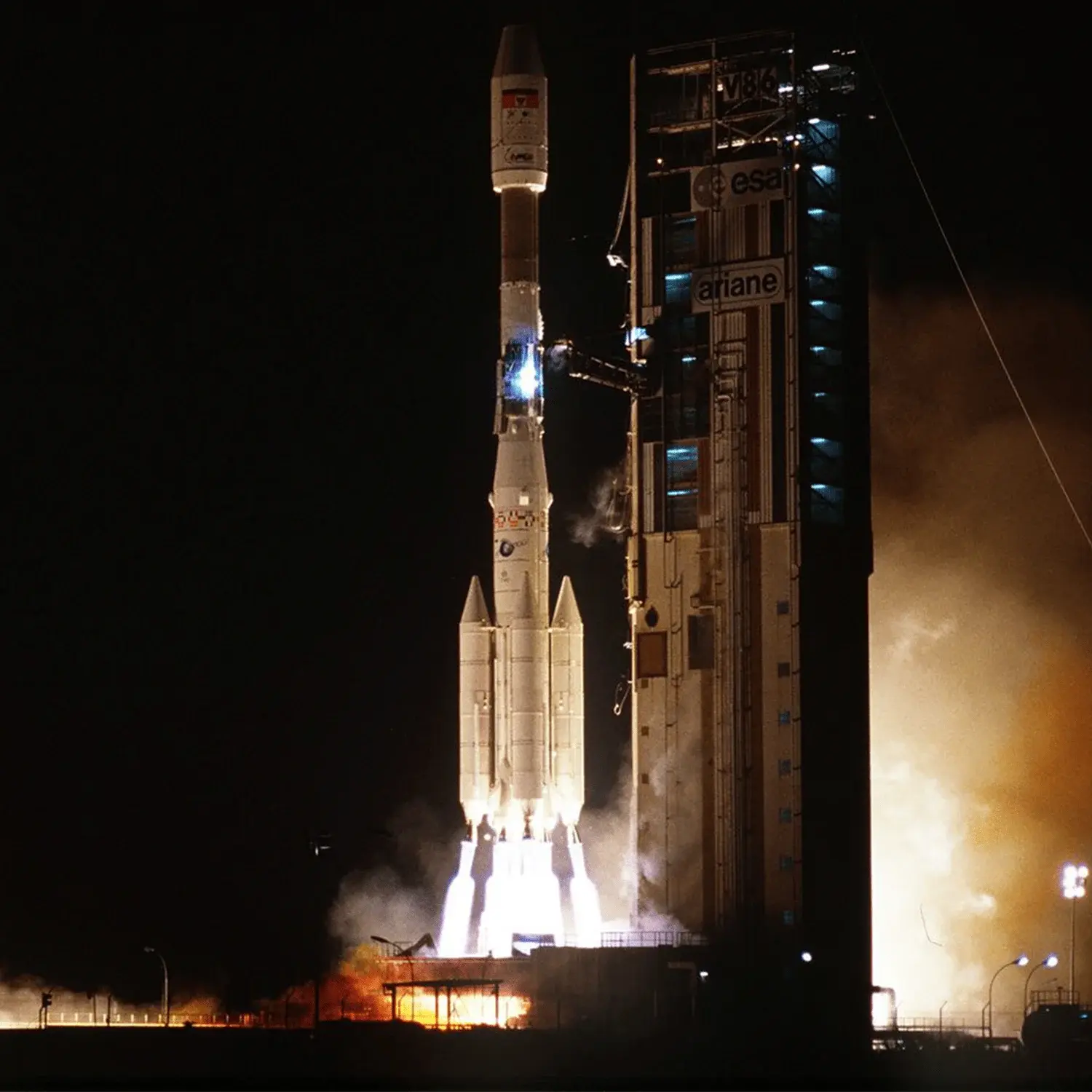SBS-6 & Galaxy 6
Launch Success
Liftoff Time (GMT)
22:58:00
Friday October 12, 1990
Mission Details
Launch Notes
Flight V39.
SBS-6
When the demand for its communications capacity increased dramatically in 1985, Satellite Business Systems (SBS) chose to purchase a larger, more powerful platform from Hughes Space and Communications Company, known today as Boeing Satellite Systems. SBS became the first customer to order the Hughes HS-393 spin-stabilized model. SBS 6 entered service in November 1990. It is in geosynchronous orbit 22,338 miles above the equator at 95 degrees West longitude. SBS 6 provides data, voice, and video communications services to private satellite network customers in the continental United States. Switchable offshore coverage is available on two transponders. SBS 6 spins at 55 rpm. It carries 30 Ku-band channels, 19 operating and 11 spares. Each channel operates in the 43 MHz bandwidth powered by 41-watt traveling-wave tube amplifiers. By comparison, a channel on SBS 4 or SBS 5 produces 20 Watts of power. Each SBS 6 channel transmits on a frequency range of 11.7 to 12.2 GHz and receives on a frequency range of 14.0 to 14.5 GHz. The satellite has a signal strength of 46.5 dBW over densely populated areas of the United States. The satellite uses a 2.4-meter parabolic antenna with a multihorn feed array, an omnidirectional command, and telemetry antenna.
Geostationary Transfer Orbit
1 Payload
2,478 kilograms
Galaxy 6
The Galaxy 376 satellites were built in the 1980s and 1990s by Hughes Space and Communications Company, incorporating new technologies as they became available. Originally ordered by Hughes Communications, Inc., the Galaxy fleet transferred to PanAmSat Corporation ownership in May 1997, when PanAmSat and Hughes Communications Galaxy merged. The new company is the world's largest private satellite owner/operator. The spacecraft are used for general communications services, such as television relay, voice, and data. Galaxy I-R, V, and IX are dedicated to cable television transmission across the United States. The fleet's ground control station is in Long Beach, California, with telemetry and command terminals in Brooklyn, N.Y., and Fillmore, Calif.
Geostationary Transfer Orbit
1 Payload
1,397 kilograms
Rocket


Manufacturer
ESARocket
Diameter: 3.8m
Height: 58.72m
Payload to Orbit
GTO: 4,720 kg
Liftoff Thrust
6,000 Kilonewtons
Stages
3
Strap-ons
4
Launch Site
Stats
Ariane 4
11th
Mission
5th
Mission of 1990
European Space Agency
30th
Mission
5th
Mission of 1990
1990
96th
Orbital launch attempt